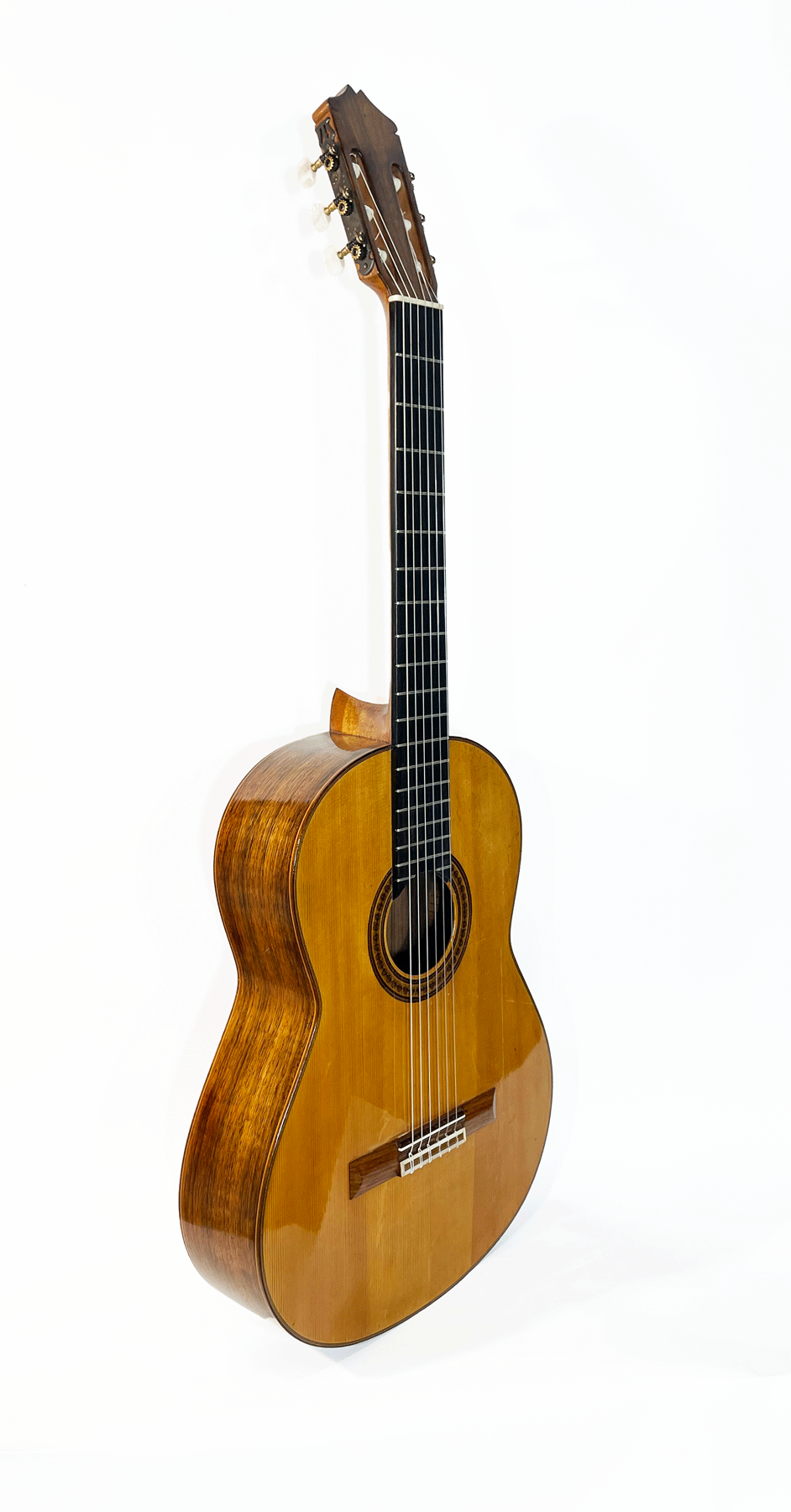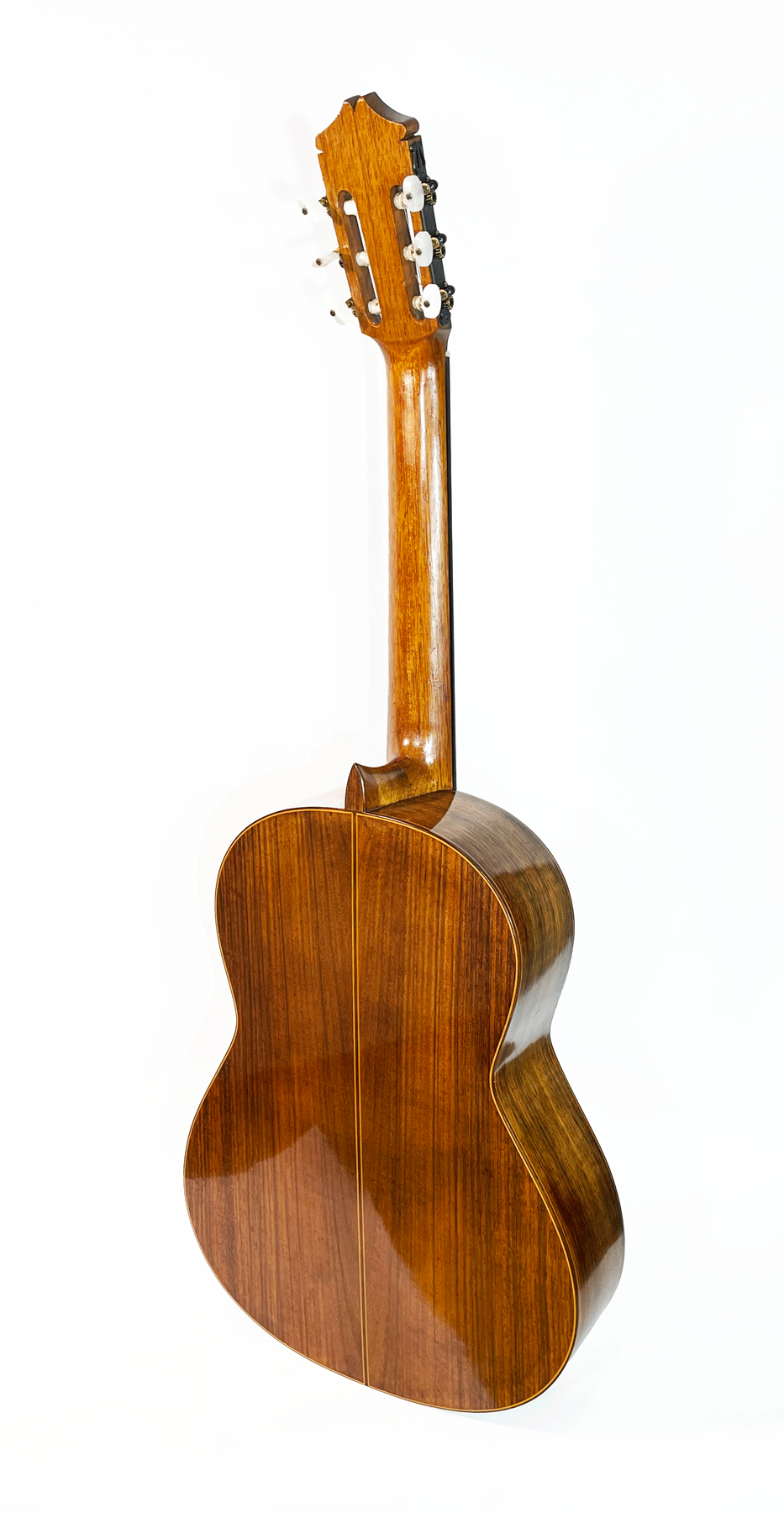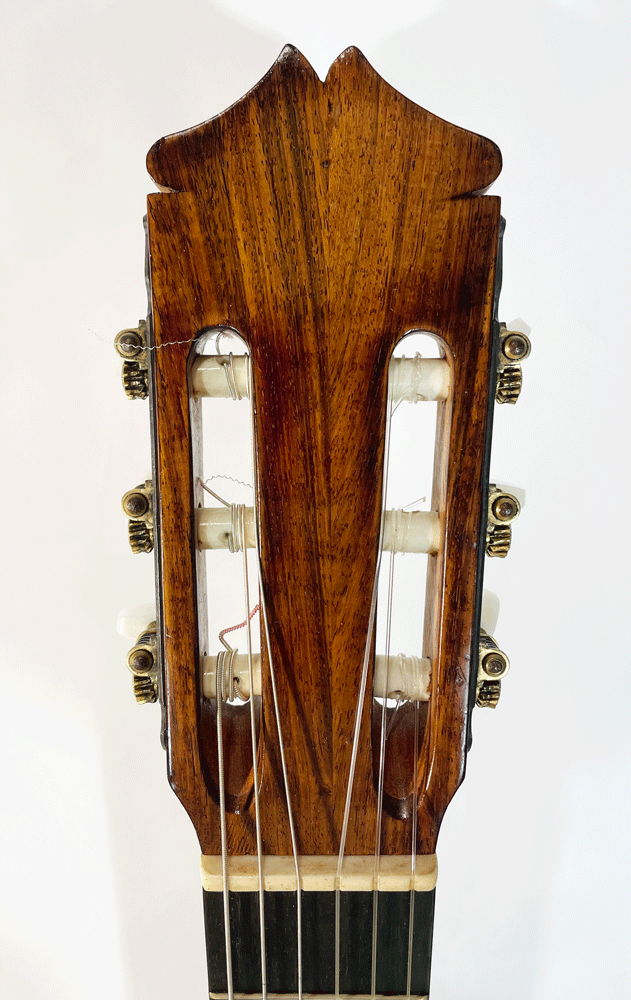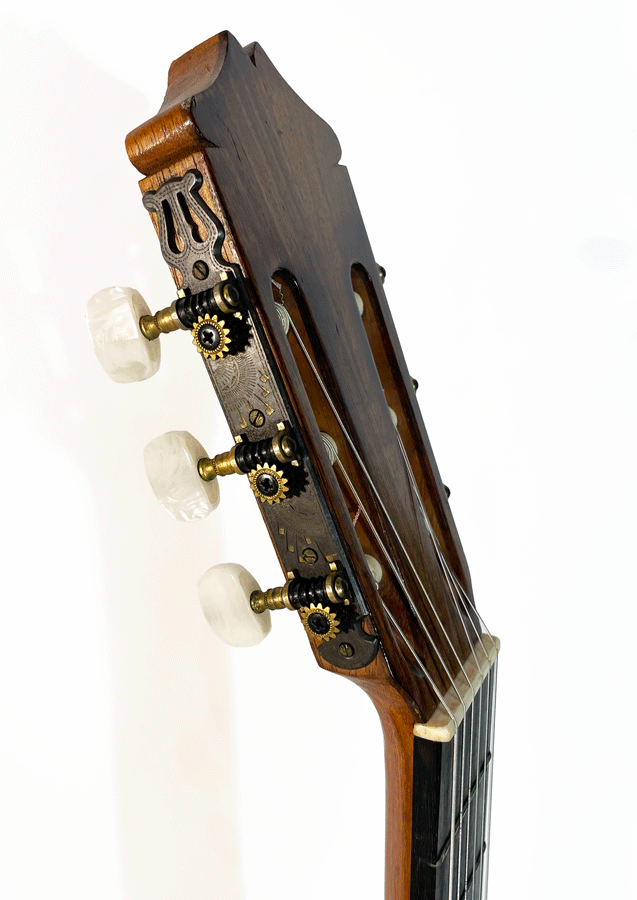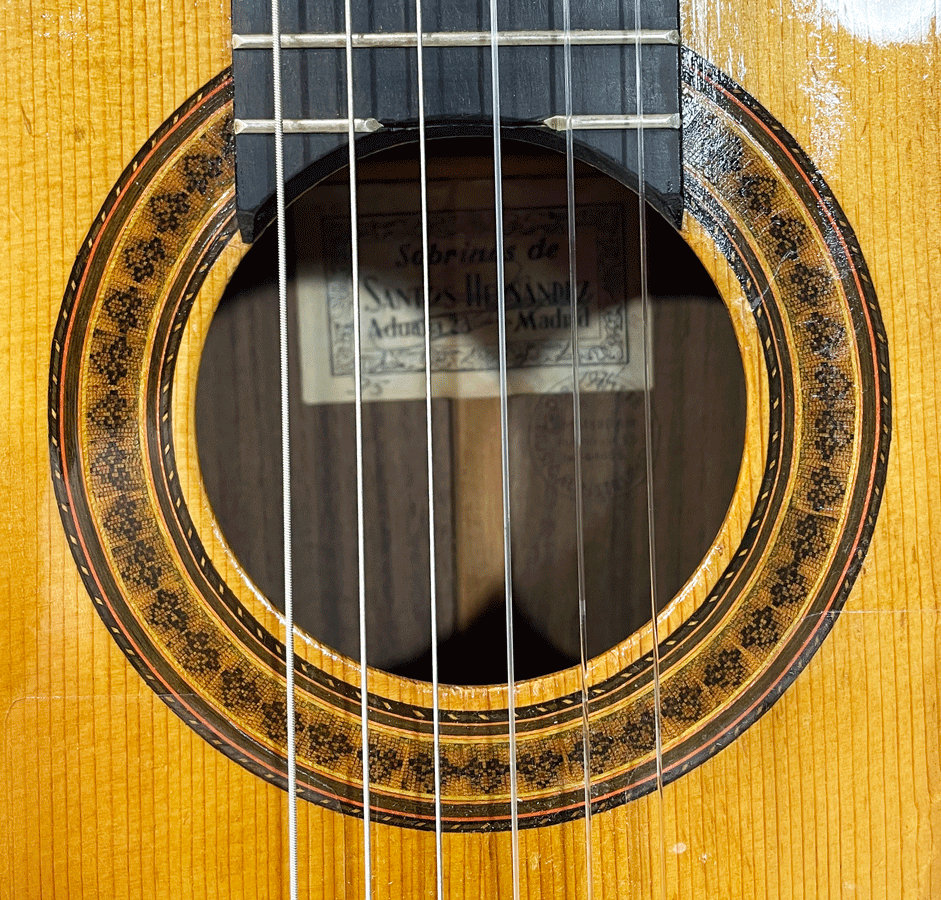Sobrinos de Santos Hernandez
Santos Hernández Rodríguez built his first guitar under his own name in 1903, working from his apartment on Madrid’s Plaza de Nicolás Salmerón, historically known as Plaza del Rastro. This instrument, affectionately called “El Bombón”, was crafted for his personal use. In the early 20th century, Santos worked primarily for Manuel Ramírez, and from 1916 for Ramírez’s widow. By 1921, he had obtained a license for his own workshop at Calle Aduana 27, though a few earlier guitars still carried the Plaza de Nicolás Salmerón address. Interestingly, a rosewood guitar from as early as 1918 already bore the Aduana label, suggesting that Santos had acquired the premises before the official license. When the street numbers were reorganized in 1932, the address became Aduana 23, which would remain the location of his celebrated workshop.
After Santos Hernández’s death in 1943, his widow, Matilde Ruiz López, received authorization to continue the workshop under the name “Viuda de Santos Hernández.” In the immediate aftermath, Santos’s student Marcelo Barbero completed the unfinished instruments left in the workshop and also built new guitars under the Viuda de Santos Hernández label. Since Santos and Matilde had no children, the legacy eventually passed to Matilde’s niece, Esperanza Ruiz, who was married to luthier Feliciano Bayón de la Morena. Under the name “Sobrinos de Santos,” Feliciano managed the workshop and later trained his son, Santos Bayón Ruiz, who directed the guitarrería until its closure in 2009. This lineage ensured that the Hernández tradition remained a cornerstone of Spanish guitar making for more than a century.
This Instrument
This guitar was crafted in the Santos Hernández workshop during the 1950s–60s, using tonewoods personally purchased and selected by Santos himself. It follows the same construction style and traditional methods of the master.
The instrument originally belonged to a student at the Amsterdam Conservatory in the 1970s, who purchased it from his teacher. That teacher had acquired it directly from the Santos workshop.
The guitar bears the authentic Santos stamp on the heel, as well as a label with an additional stamp and the date 1979 from Dirk Witten, a well-known guitar shop in Amsterdam. At that time, shops often added their own stamp and date when selling guitars from their collections. This does not represent the actual year of manufacture, as confirmed by the handwritten details on the label.
Woods and construction:
Spruce top
Indian rosewood back and sides
Cedar neck
Fustero tuners
French polish finish
This is a truly unique instrument with a rich history and remarkable provenance. The sound is exceptionally clear, loud, and responsive, and the playability is effortless.
If you are curious, make an appointment and come have a look – this is a guitar you don’t want to miss.
